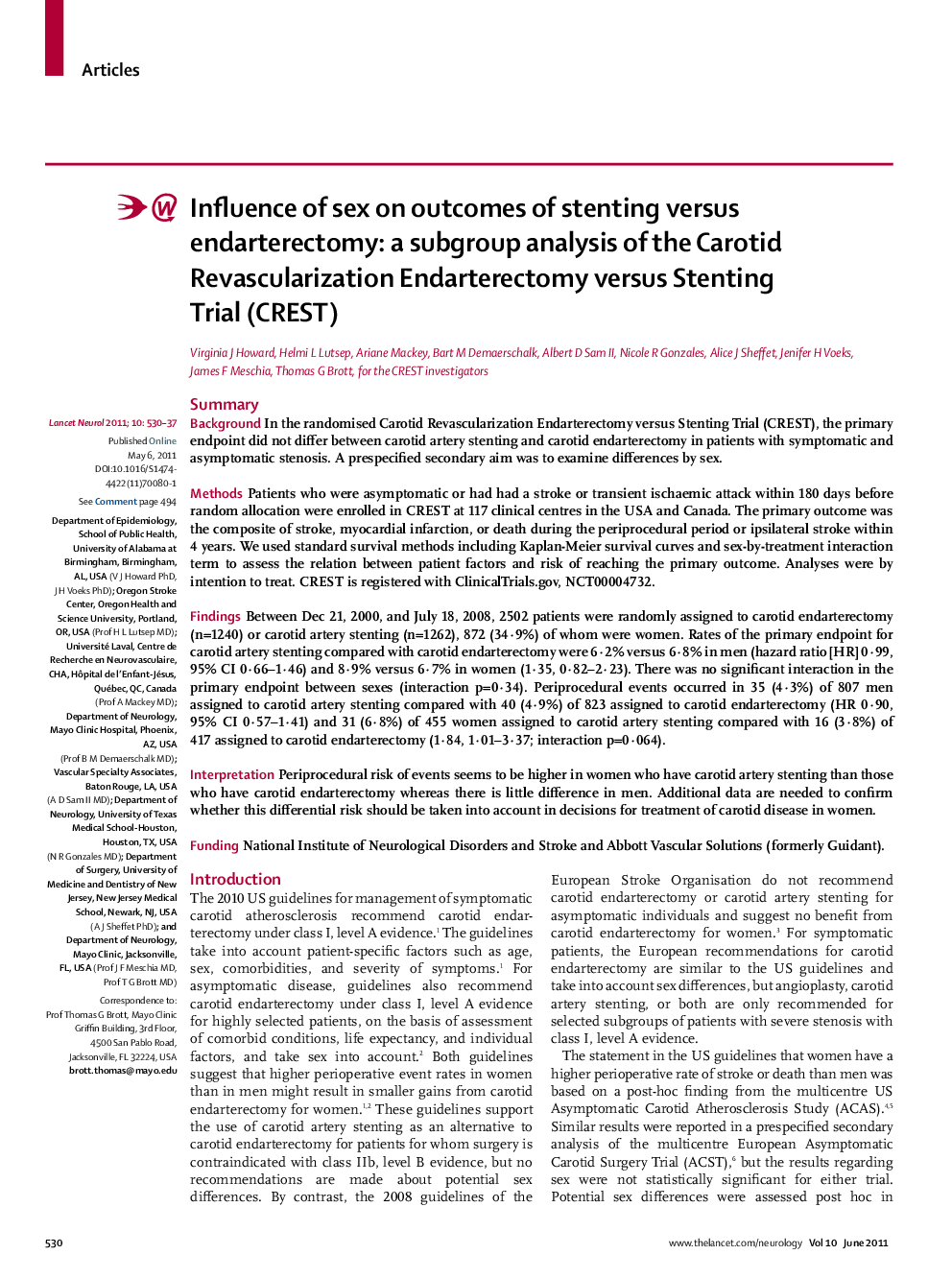| Article ID | Journal | Published Year | Pages | File Type |
|---|---|---|---|---|
| 3067094 | The Lancet Neurology | 2011 | 8 Pages |
SummaryBackgroundIn the randomised Carotid Revascularization Endarterectomy versus Stenting Trial (CREST), the primary endpoint did not differ between carotid artery stenting and carotid endarterectomy in patients with symptomatic and asymptomatic stenosis. A prespecified secondary aim was to examine differences by sex.MethodsPatients who were asymptomatic or had had a stroke or transient ischaemic attack within 180 days before random allocation were enrolled in CREST at 117 clinical centres in the USA and Canada. The primary outcome was the composite of stroke, myocardial infarction, or death during the periprocedural period or ipsilateral stroke within 4 years. We used standard survival methods including Kaplan-Meier survival curves and sex-by-treatment interaction term to assess the relation between patient factors and risk of reaching the primary outcome. Analyses were by intention to treat. CREST is registered with ClinicalTrials.gov, NCT00004732.FindingsBetween Dec 21, 2000, and July 18, 2008, 2502 patients were randomly assigned to carotid endarterectomy (n=1240) or carotid artery stenting (n=1262), 872 (34·9%) of whom were women. Rates of the primary endpoint for carotid artery stenting compared with carotid endarterectomy were 6·2% versus 6·8% in men (hazard ratio [HR] 0·99, 95% CI 0·66–1·46) and 8·9% versus 6·7% in women (1·35, 0·82–2·23). There was no significant interaction in the primary endpoint between sexes (interaction p=0·34). Periprocedural events occurred in 35 (4·3%) of 807 men assigned to carotid artery stenting compared with 40 (4·9%) of 823 assigned to carotid endarterectomy (HR 0·90, 95% CI 0·57–1·41) and 31 (6·8%) of 455 women assigned to carotid artery stenting compared with 16 (3·8%) of 417 assigned to carotid endarterectomy (1·84, 1·01–3·37; interaction p=0·064).InterpretationPeriprocedural risk of events seems to be higher in women who have carotid artery stenting than those who have carotid endarterectomy whereas there is little difference in men. Additional data are needed to confirm whether this differential risk should be taken into account in decisions for treatment of carotid disease in women.FundingNational Institute of Neurological Disorders and Stroke and Abbott Vascular Solutions (formerly Guidant).
